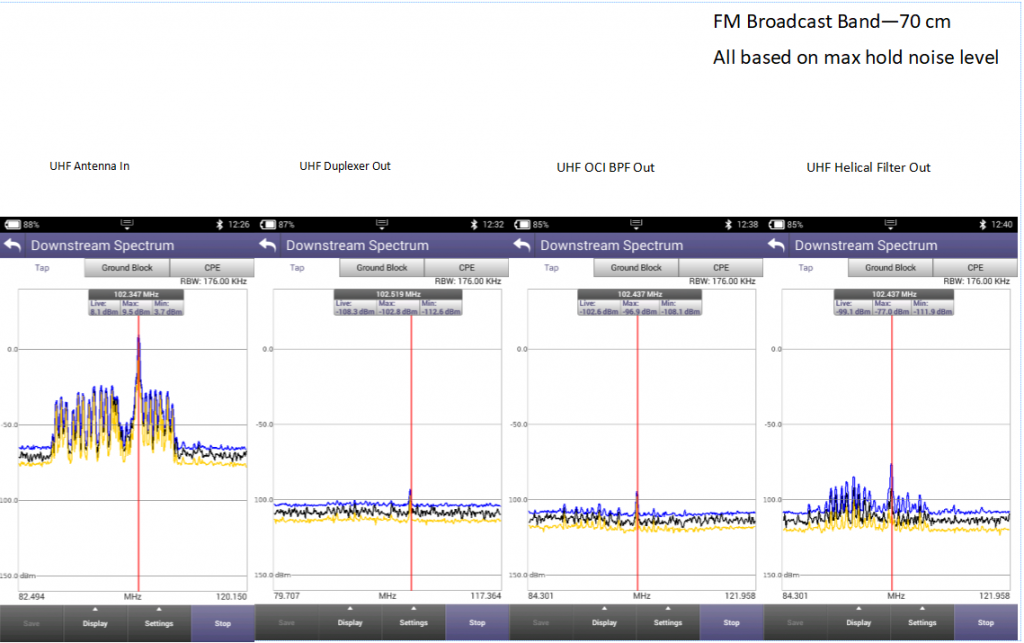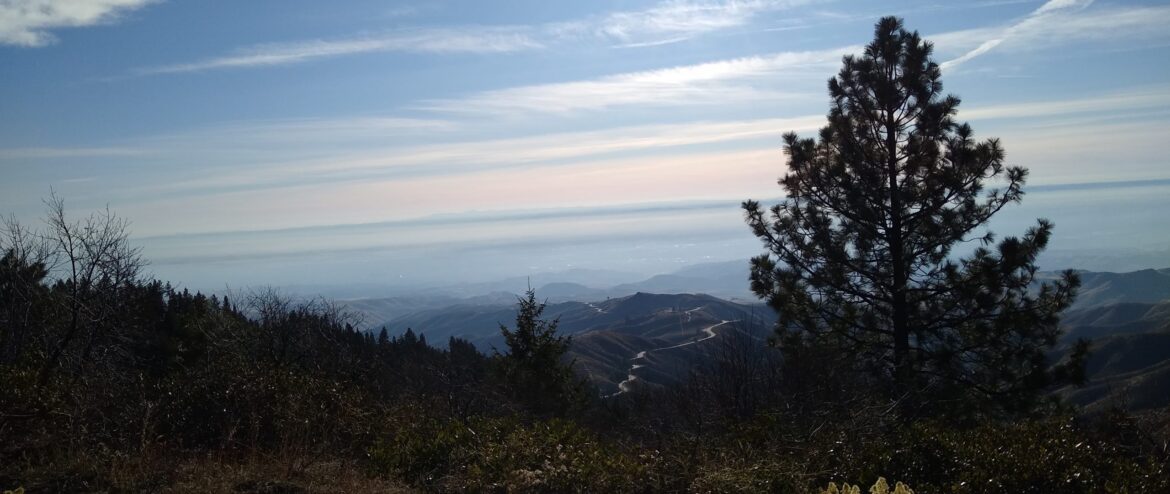Like a lot of radio groups, we jumped on the opportunity for an inexpensive, modern repeater to upgrade our older crystal controller GE Mastr II and Motorola MSR2000 commercial base stations. Yaesu offered what seemed like a deal too good to be true: $400 refurbished dual band, analog/digital repeater with a 3 year warranty – shipped no less! We jumped on them with plans to replace our VHF and UHF repeaters on the mountain and UHF repeater in the valley. After roughly 2 years of prep work, we deployed the mountain top repeaters in October 2019 to much fanfare.
Couple things we noticed immediately as we deployed the units –
- The squelch pot had to be turned up almost half way on the repeaters to clear the COS light on the controller. On the bench in the valley, these only needed a single notch on the squelch which resulted in 0.22 uV sensitivity for 12 dB SINAD on a borrowed HP service monitor.
- There was noticeable whine from the cooling fan on the receiver after the first key up.
- Coverage on the VHF side had dropped by about 30 miles on mobile and 40 miles on handheld.
- UHF talk out range had dropped by two thirds.
So we stepped back and looked at the spec sheets, our installation and considered the possible issues.
- Yaesu’s DR-1X was only rated for 20 watts for continuous duty; these replaced 100 watt repeaters.
- Yaesu’s selectivity spec is only 55 dB; the repeaters they replaced were north of 90 dB.
- We had added the OCI BPF (preselector) in line with the antenna on the UHF repeater but inline with the receiver chain on the VHF.
- The fan noise was not present when using the internal controller.
Several emails, phone calls and IMs with other repeater owners, tech support and elmers results in a common theme – our expectations for a $400 repeater to replace commercial hardware might have been too high to start with.
I visited the site in mid November for some deeper testing and reconfiguration. The selectivity issue was rearing its ugly head as the site noise floor was nearly -55 dBm! Our Mastr II and MSR2000 had been rock solid in this environment for over a decade with excellent low power handheld coverage in the valley and fringe mobile coverage out beyond 60 miles. Something had to change.
For reference, our mountain site is:
- 2200′ HAAT
- Colocates with UHF SCADA, UHF DTV x12, FM 150 watt broadcaster, wireless ISP microwave, 4 cell carriers and 7 carrier microwave links.
- Is within 2 miles of VHF/UHF/700 LMR repeaters x24
- Is within 5 miles of FM broadcast x15, VHF DTV x3, UHF DTV x6
- Is within 6 miles of several other amateur repeaters
- All within line of sight of our antenna
With a borrowed spectrum analyzer, I began methodically testing the noise floor at the repeater sub bands, in the FM broadcast band, and in VHF & UHF TV broadcast bands. Not all of the screenshots saved but you can see the changes below. The equipment used in line with filtering:
VHF – Sinclair Q2220E BpBr Duplexer > OCI 2m BPF > Mastr II Front End/Preamp Helical Filter
UHF – DB Product DB-4071-WA BpBr Duplexer > OCI 70 cM BPF > Mastr II Front End /Preamp Helical Filter

Why add helical filters? If we wanted commercial performance out of our amateur repeaters, why not put commercial front ends ahead of the receivers. For the most part, it had the desired effect, with a 10-12 dB difference in effective noise floor at the receiver port of the repeater. Why the preamp? The helical is very lossy (north of 12 dB) when tuned. We used the Mastr II 12 dB preamp which we’ve had in all of our repeaters over the years as it is a moderate gain preamp with decent noise factor and fits in the front end casting, resulting in +1 dB gain for the VHF and -1 dB loss for the UHF assembly.
Before we get to the SA shots – a summary:
- Yaesu DR-1X repeaters are a great value at a quiet site or for portable tactical use; it struggles in high RF environments
- BpBr duplexers can have mixed results for out of band noise suppression, but for the most part, will require some form of preselector and additional filtering when in high RF environments
- The VHF duplexer only presented 2 dB isolation in the FM broadcast band compared to the input
- Interfacing to an external controller took a lot more effort and time than we anticipated, delaying our deployment by over a month
- With the snow coming soon, we will be regrouping over the winter to determine our next steps, however, we will likely move the DR-1X to our valley sites and deploy commercial hardware at the mountain
- The support we’ve received from the amateur community and Yaesu tech support is top notch
- Not every solution works every time
Screen shots from Viavi ONX-630 running 3.16.10 firmware.
Download the full resolution screenshots here:











